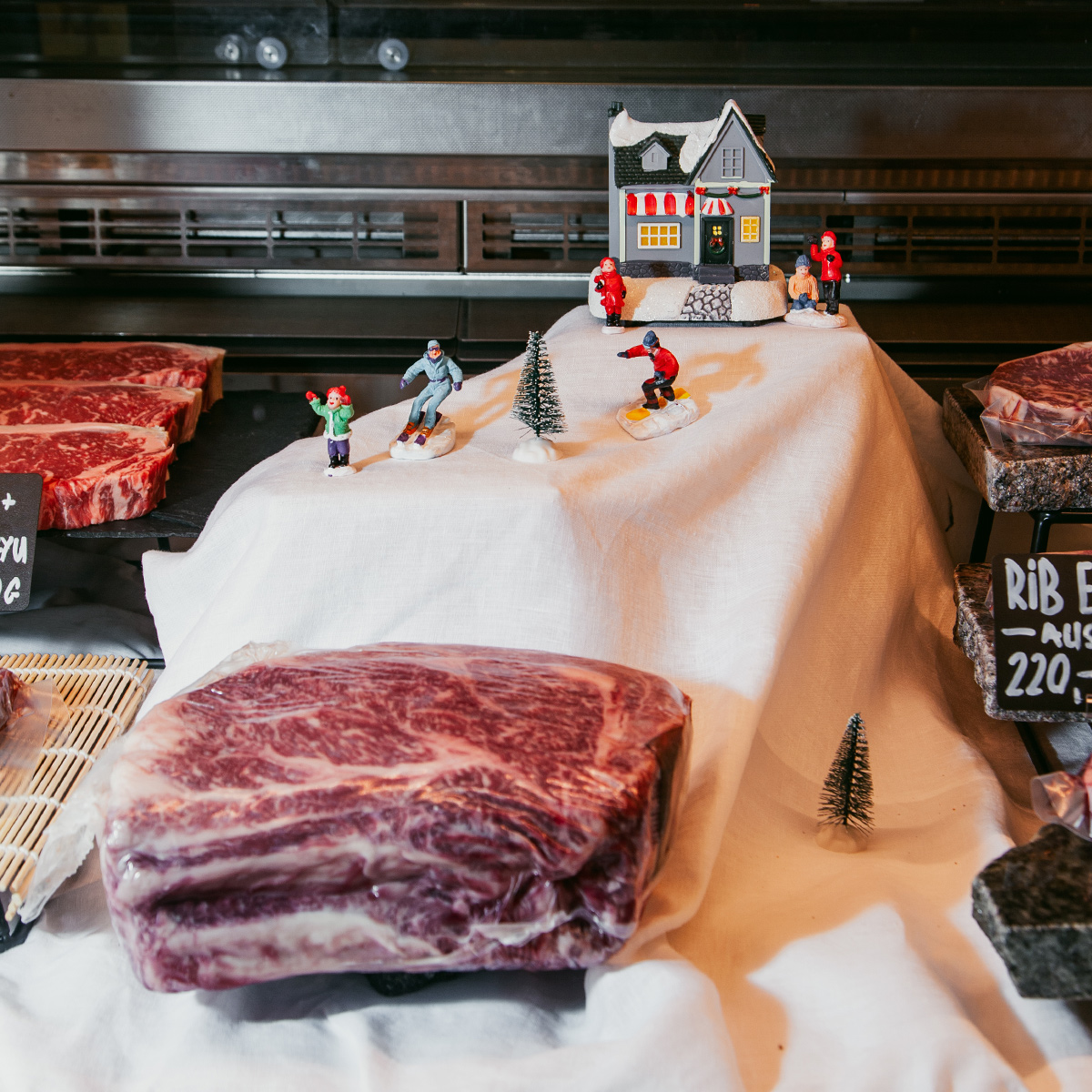Famed for their farm-restaurant concept, as well as their peerless offer of meats, we talk to Jakub, head butcher at The Farm about the secrets of his meats…
Famed for their farm-restaurant concept, as well as their peerless offer of meats, we talk to Jakub, head butcher at The Farm about the secrets of his meats…

Insider: Where are your meats from?
We have 400-hectare farm in the Warmia-Mazuria region of northern Poland and that’s where we breed certified Aberdeen Angus, Wagyu cattle, etc. The concept was to have our own farm so we could control the whole process from start-to-finish and maintain the quality we want. That way, we control the cost, the quality and so forth.
I: How would you describe Poland’s beef market?
We’ve got good farms, but 90 to 95% of our top quality beef goes abroad for export.


I: What are your selection criteria?
We cover a broad scope. We have steaks with high marbling, and also medium marbling for those who like a little fat but not too much. Then there’s other red meats that are delicate, not chewy. Typically speaking, we’ve got a wide spectrum of meats to choose from: dry-aged, wet-aged, on the bone, Argentinean, Chilean, Japanese, Polish, etc.
I: What’s the secret to a good steak at home?
The biggest piece of advice I offer is to rest the meat when it’s out of the fridge, and the longer the better. Meat needs to be at room temperature so you need to rest it before cooking. Also, you need to observe it during the cooking process. Don’t be afraid to touch the meat to see how it’s cooking.


I: How would you advise someone to best enjoy their steak – any condiments or garnishes?
I see some customers ordering a Wagyu and asking for a Bearnaise sauce – in such instances, I’ll gently suggest that maybe they try the steak first, perhaps with a little salt or pepper, before adding any sauce. First, try and enjoy the meat rather than thinking of the wider dish. It’ll open a new taste. Of course, if you like sauce, then go for it – food is a pleasure, after all. If it makes you happy, then go ahead!
I: How should people store a steak?
It’s really important that the customer and butcher communicate with each other. If we don’t know what you want to do with a cut, we can’t advise you. But if, for example, we know that your steak is for the end of the week, or next week even, then I’ll vacupack but still recommend freezing just in case something goes wrong. If you’re a customer, never be afraid to ask your butcher questions!


I: What do you expect to be selling in January?
It varies. Demand changes, so it’s a case of us saying, right, we’ll shift 20 rib-eyes and 100 tenderloins this week. Maybe customers will have seen a cooking program or seen a recipe in a magazine – in our line of work, we simply have to be ready to respond. Each month is a little different from the last.
I: Finally, how should we be serving a steak – is wood any good?
The moment a steak is ready its temperature will always go down, so a hot plate is needed, one that will give you enough time to enjoy your cut whilst you eat it.